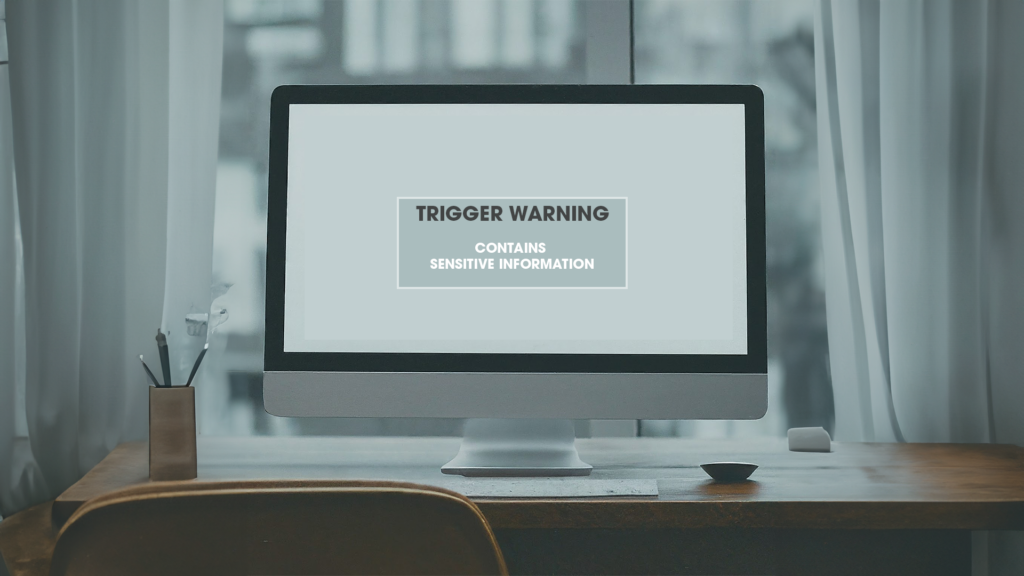Tips from the field on getting sensitive topics right
Nobody wants to put their foot in it and up getting cancelled, risk (re)traumatising someone or simply creating an unbearably awkward moment. One of the blessings and curses of video content, or any corporate communication in this era, is that your content can be viewed and reproduced by any audience, in any context, endless times. If we are going to be authentic organisations and people, then we can’t shy away from sensitive topics, but we do want to get it right. Here’s a few tips from our experience that might assist in the process of navigating sensitive subject matter in corporate video content:
- Say only what is necessary. Restraint goes a long way, so consider the level of detail you use. There is something to be said of discretion, especially when touching on subjects like suicide, abuse or crime – you are less likely to be inflammatory if you provide only the level of detail required for people to understand, and not anything salacious or superfluous.
- Try a Trigger Warning. Trigger warnings can be overused and thus are controversial, but they can also be helpful if you keep them brief and don’t overuse them. Save warnings for content that would generally be considered confronting, that goes into a reasonable degree of detail, or has a particular cultural (or other) sensitivity that viewers might wish to avoid exposing themselves to entirely. A trigger warning could be a simple full screen graphic, or a pre-emptive lower third graphic.
- Know Your Subject Matter. If it’s not yours to talk about, then provide a platform to others who can speak on the matter with authority. Say what you know or feel, not what you don’t. Let opinion remain opinion – don’t present it as fact. Create dialogue and the space and willingness to listen. Corporate communication is no longer a one-way top-down exercise, so put the effort into fostering dialogue and promoting important and under-heard voices.
- Know Your Audience. Think about who has access to your content. Are there factors that make them vulnerable? Kids are an obvious group to be mindful of here, but there are lots of other examples depending on the context. Have a think about what particular groups are relevant to your organisation. On the flip side, we don’t want to patronise audiences or over-sensor, so take time in advance to get to know your audiences, and where possible conduct research into the market, you can also do test screenings of your edited videos if you have concerns.

Looking After Your People: Talent and Team
Often when communicating sensitive topics an interviewee is involved, or we are retelling a story in some form. In cases where threat is posed to their well-being (for example victims of domestic violence or workplace bullying) you can provide anonymity (there are many practical and creative ways to do this – think reenactments, silhouettes, voice-over narration etc). But for most cases where the person can be identified, here’s a few quick tips for fulfilling duty of care to those involved:
1. When recording, only have people in the room that actually need to be there.
2. Choose the right interviewer who will have their head around tactful language, cultural faux pas and will be able to establish appropriate rapport.
3. Offer breaks while recording, and initiate them yourself if there is notable distress. You can word this in such a way that it takes the pressure off the distressed individual, for example ‘You’re doing a brilliant job, thank you for sharing so powerfully with us. Let’s take a quick break’. Also, while a viewer might watch something once, an editor, for example, will watch it over and over again, so offer breaks in the post production process too.
4. Seek out consultation and feedback from relevant communities and key players involved.
5. Have counselling services on offer and easily directly accessible without barriers. Mandating debriefs can be problematic as everyone processes differently, but making optional services available can be a lifesaver for people.
6. For viewers, a graphic screen at the end pointing them towards relevant support services like Lifeline can be helpful, just bear in mind that these can be region specific , whereas your content may have global reach.
7. One best practice is to say to everyone involved, in advance, no questions asked, ‘If this subject matter is an issue for you, you don’t have to work on this project – opt out at any time’.

At the end of the day, audiences respond positively to well-throughout authenticity, and even in corporate spaces that have traditionally steered clear of human complexity, there is now a demand for it. It’s important that we be unafraid to tackle real issues, discuss hard things, laugh and cry together, debate and disagree, and explore and educate in an appropriate way. So rather than shy away from sensitive subject matter, let’s put the effort into learning from mistakes, listening to one another and getting it right.
If you’d like to tackle sensitive topics in your video content, we at Rocket Productions have a wealth of experience spanning issues, contexts and industries, and can help guide you through the process, reach out to start the discussion about how we can help.
I’m Rachel Hogan, Producer-Director at Rocket Productions in Sydney Australia, I’m not married to my ideas. Please feel free to change my mind or just add your thoughts into the mix.
